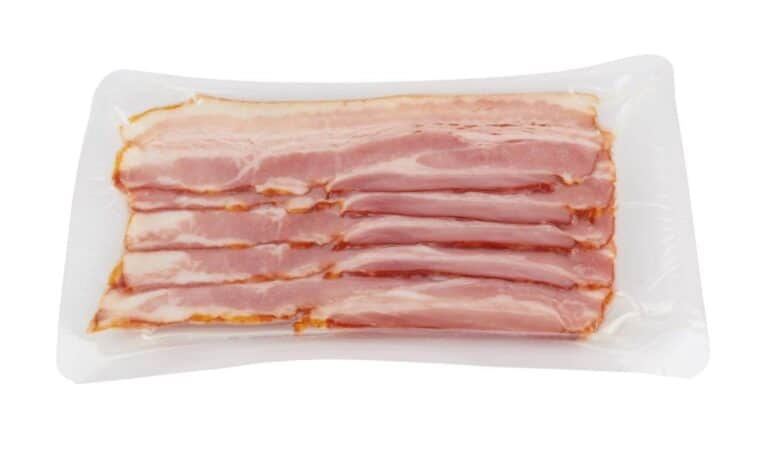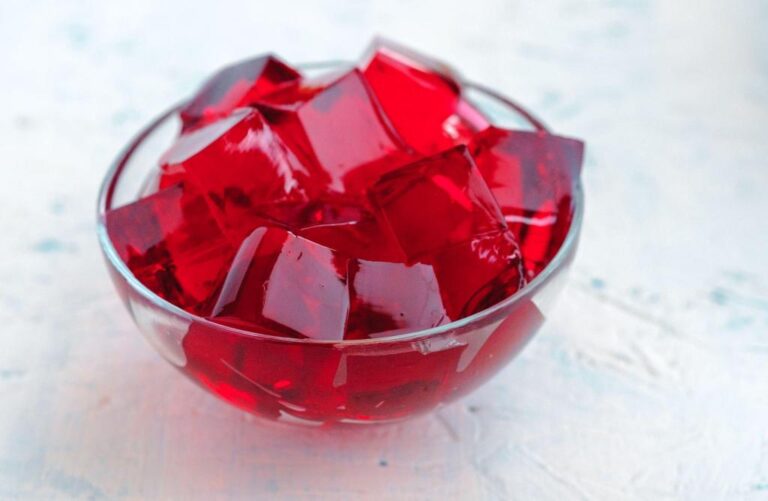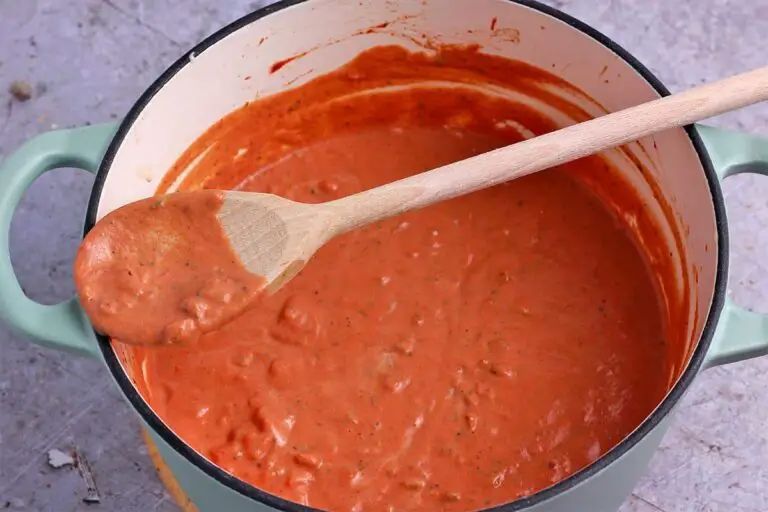Inside of a Cooked Meatball: Why It’s Still Pink After Cooking
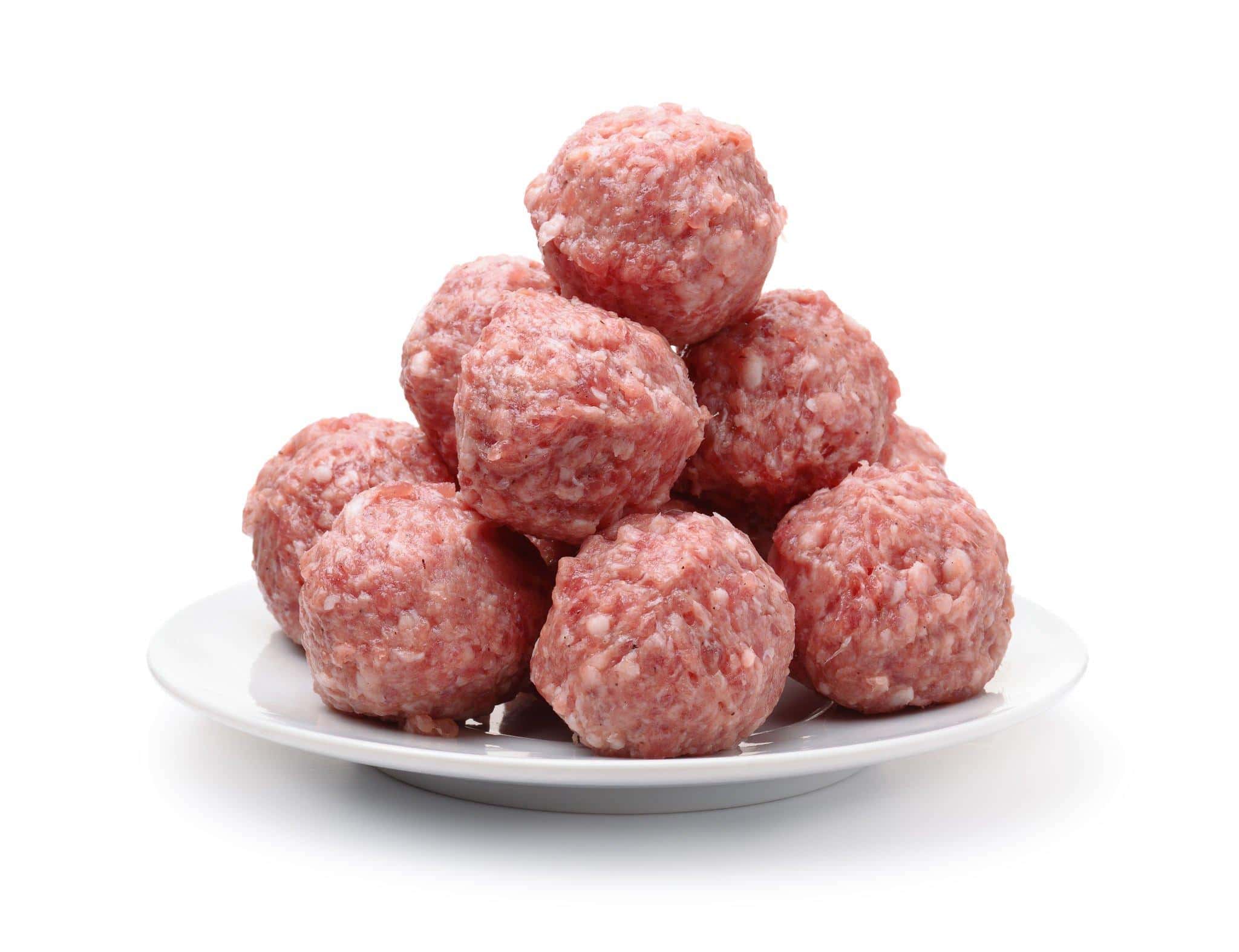
Meatballs are a beloved culinary creation that grace our plates in various forms, from spaghetti pairings to party platters. But have you ever cut into a cooked meatball and found it to be slightly pink inside?
Yes, you heard it right—we’re delving into the meaty mystery that has left many a cook scratching their heads. Imagine this: a plate piled high with tender meatballs, a feast for the eyes and the stomach. But as you slice into one, a flicker of pink nestled within gives rise to doubt.
Fear not, for we’re about to unveil the captivating science behind these savory spheres and explore the science, safety, and secrets that lie within the confines of a cooked meatball. So grab your apron, sharpen your culinary curiosity, and let’s uncover the delicious truth together. Let’s delve into the fascinating world of meatballs, unraveling why this unassuming dish has become a culinary icon across the globe.
The Basics of Meatballs and Why They’re So Popular
When it comes to comfort food that transcends cultures and generations, the humble meatball is a true champion. Its popularity rests not only on its delectable taste but also on the deep-rooted connection it forges with our senses and memories.
At its core, a meatball is a flavorful orb of ground meat, often mixed with various seasonings, breadcrumbs, and other ingredients that give it character and complexity. These savory spheres are then cooked to perfection, capturing the essence of taste and aroma that evoke warmth and nostalgia.
What makes meatballs exceptional is their sheer adaptability—whether nestled in a rich marinara sauce, perched atop a mound of spaghetti, or enjoyed solo as appetizers, they seamlessly transition across cuisines, showcasing their universal appeal.
The allure of meatballs extends beyond their culinary prowess. It’s a dish that carries with it a sense of tradition, often passed down through generations. Families have their own treasured recipes, each with its own unique blend of spices and techniques that reflect cultural heritage. From Italian Nonna’s secret blend of herbs to Grandma’s cherished Swedish meatball recipe, these culinary traditions weave stories of love and togetherness, creating a tapestry of flavors that connect us to our roots.
Meatballs encapsulate the essence of comfort—a single bite can transport you to cherished moments around the dinner table. As they simmer in pots and pans, their aroma wafts through kitchens, reminding us of home and belonging.
Meatball Cooking Process and Color Changes
The tactile process of shaping and rolling meat into these perfect spheres, whether with hands covered in breadcrumbs or delicately handling it with care, invites us to participate in the creation of something special.
The journey from raw meatball to delectable dish involves a complex interplay of heat and chemistry. As meatballs sizzle away, heat penetrates their core, denaturing proteins and transforming them into a palatable texture. The Maillard reaction, a chemical dance between amino acids and reducing sugars, is what controls this transformation.
Raw meatballs typically exhibit a pinkish hue due to the presence of myoglobin, a protein responsible for the initial color. As they cook, the myoglobin undergoes changes, causing the color to shift from pink to brown. This shift depends on factors like cooking time, temperature, and ingredients.
The relationship between cooking time and color transformation is akin to an artist’s canvas. Longer cooking times at lower temperatures might yield a pinkish interior, while shorter cooking times at higher temperatures result in a more uniformly cooked meatball.
Maillard Reaction and Browning
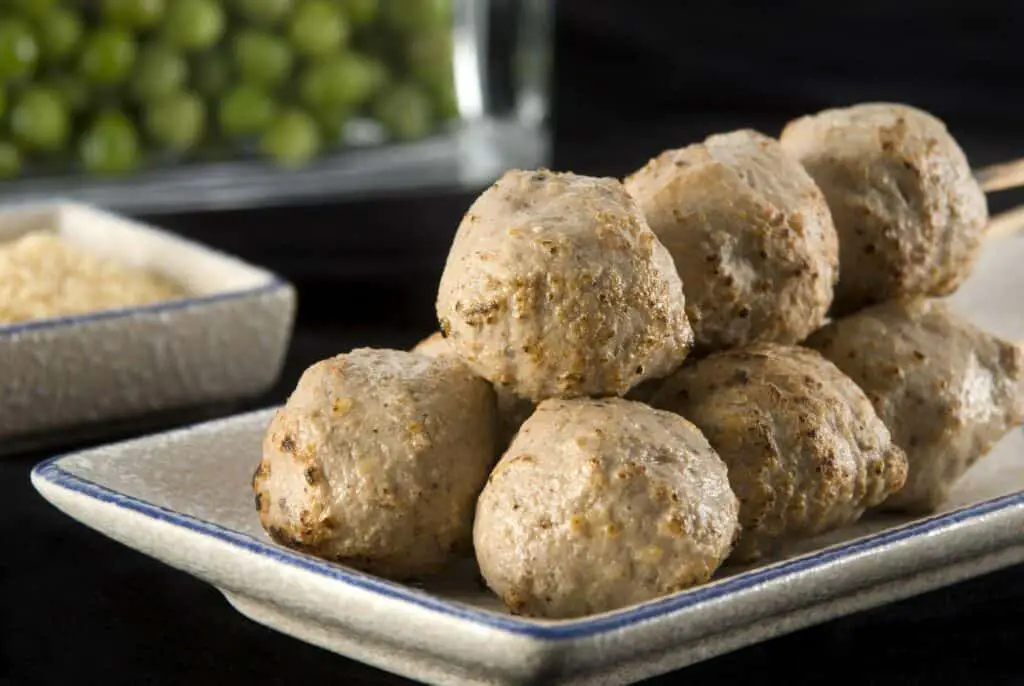
The Maillard reaction isn’t just a term; it’s a culinary masterpiece. The combination of amino acids and reducing sugars is what causes this reaction, which gives cooked meatballs their delicious golden-brown exterior.
As heat caresses the surface of the meatball, the Maillard reaction kicks into gear. A cascade of chemical reactions ensues, resulting in the browning effect we associate with deliciously cooked meats. The longer the meatball dances in the pan, the more intense the browning becomes.
The cooking temperature has an impact on the Maillard reaction’s intensity. Higher temperatures accelerate the reaction, producing that rich, caramelized exterior. Thus, adjusting the heat can play a crucial role in achieving the perfect balance between the exterior and interior of your meatball.
Why Is It Still Pink Inside After Cooking Meatballs?
The sight of pink meatballs can trigger safety alarms, but it’s not always a cause for concern. The pink coloration can stem from various factors, including the presence of additives and binders used in the meatball mixture. These additives might retain a shade of pink, even when the meatball is fully cooked.
Pinkness doesn’t always indicate undercooked meat. Some meats, particularly pork and poultry, can retain a slight blush even when fully cooked. Using a meat thermometer is your culinary safeguard; ensure that the internal temperature reaches the safe zone for the specific type of meat.
To tackle the pink dilemma, the meat thermometer is your trusty sidekick. Insert it into the thickest part of the meatball to check if it has reached the recommended internal temperature. This temperature varies by meat type and desired doneness; for beef, it’s 160°F (71°C), while poultry demands a higher 165°F (74°C).
Meatball Internal Temperature and Doneness
Meatball doneness is more than a visual cue; it’s a numerical achievement. Internal temperature is the key to determining whether your meatball is safe, succulent, or potentially hazardous.
The realm of meatball doneness spans from rare to medium to well-done. These gradations hinge on the internal temperature reached during cooking. For rare meatballs, an internal temperature of 140°F (60°C) suffices, while medium and well-done aim for the previously mentioned 160°F (71°C) and 165°F (74°C) thresholds, respectively.
Ensuring food safety is paramount. To avoid the risk of undercooked meat, ensure that your meatball reaches the ideal internal temperature for the type of meat used. This guarantees both culinary satisfaction and peace of mind.
With a clearer understanding of the intricate science behind meatball cooking and color changes, you can now savor your culinary creations without the pink panic. Utilize your meat thermometer wisely, embrace the Maillard magic, and relish the flavors that perfectly cooked meatballs bring to your table.
Factors Affecting Meatball Color
The type of meat you choose significantly impacts the color of your cooked meatball. Beef, pork, and poultry each have distinct color changes during cooking. While beef often transitions to a rich brown, poultry can sometimes retain a subtle pink hue even when fully cooked.
Don’t underestimate the influence of your seasoning choices. Ingredients like paprika and cayenne pepper can lend a reddish tint to your meatballs. Additionally, additives and binders used in commercial meatball production can sometimes lead to a preserved pink color, even after thorough cooking.
The method used to grind the meat plays a role in the color of your meatballs. Finely ground meat may appear lighter in color compared to coarser grinds. Furthermore, fat content contributes to both flavor and color. Higher fat content can result in a juicier texture and a more vibrant appearance.
The external browning of a meatball doesn’t always correlate with its internal color. A perfectly browned exterior doesn’t guarantee that the interior is thoroughly cooked. Using a meat thermometer to assess doneness is crucial to ensuring safety and optimal taste.
Testing Meatball Doneness
Doneness isn’t solely determined by a thermometer. Visual and tactile cues play a significant role. A properly cooked meatball will feel firm when gently pressed. The color should be consistent throughout, with no obvious pinkness in the center.
- The Meat Thermometer: For precision, nothing beats a meat thermometer. Insert it into the thickest part of the meatball to get an accurate internal temperature reading. This is especially important when dealing with poultry, which should reach a minimum of 165°F (74°C) to ensure safety.
- Monitoring Color and Texture: Keep an eye on the color changes as your meatballs cook. Remember, poultry can sometimes retain a hint of pink even when fully cooked. Texture is also a reliable indicator; a fully cooked meatball should be tender but not mushy.
- Practical Tips: To avoid overcooking, remove meatballs from the heat just before they reach the desired internal temperature. Carryover cooking will continue to raise the temperature slightly, ensuring they’re cooked to perfection.
Role of Nitrites in Meatball Color
Nitrites, often used in processed meats, serve more than just preservation purposes. They also play a role in maintaining the appealing pink color of meats like ham and bacon. Similarly, nitrites are sometimes used in commercial meatball production to retain a specific color.
Nitrites interact with myoglobin, the protein responsible for meat color, to create a stable pigment. This helps prevent undesirable color changes during cooking and processing.
While nitrites contribute to color stability and preservation, concerns about their potential health effects have been raised. Some studies have linked excessive nitrite consumption to health risks. Moderation and awareness are key when it comes to incorporating nitrite-treated products into your diet.
The Verdict: Pink but Safe?
In conclusion, while we associate well-cooked meat with a uniform brown color, it is possible for meatballs to still exhibit a touch of pinkness after cooking. The presence of pink in a cooked meatball is not necessarily an indicator of undercooked meat. Factors like the type of meat, cooking temperature, and chemical reactions can all contribute to this phenomenon.
Ultimately, the key to determining whether your meatballs are safe to eat lies in their internal temperature. Using a meat thermometer and ensuring they reach an internal temperature of 160°F (71°C) is the surest way to guarantee their safety. So, the next time you slice into a meatball and find a hint of pink, rest assured that it doesn’t necessarily mean your culinary creation is undercooked.
In the intricate dance of cooking meat, color is just one of the many factors at play. From the science of myoglobin to the art of seasoning, every step contributes to the symphony of flavors that grace our plates. So, whether your meatballs are a rich mahogany or a delicate blush, remember that the true magic lies in the balance of taste, texture, and, above all, safety.
FAQs on Properly Cooked Meatballs and Safety
Are pink meatballs safe to eat?
Pinkness in cooked meatballs doesn’t always indicate undercooking. Factors like myoglobin content and cooking methods can contribute. To be safe, use a meat thermometer. Meatballs are ready when their internal temperature reaches 160°F (71°C).
How do I know when meatballs are fully cooked?
To determine meatball doneness, check their internal temperature with a meat thermometer. Fully cooked meatballs should reach at least 160°F (71°C). Cutting into one can also reveal a uniform color and texture.
Can you get sick from undercooked meatballs?
Yes, undercooked meatballs can harbor harmful bacteria. Consuming undercooked meat can lead to foodborne illnesses. Properly cooking meatballs to the recommended internal temperature is crucial for food safety.
What factors affect the color of cooked meatballs?
The meat’s myoglobin content, cooking temperature, and chemical reactions influence meatball color. Poultry might retain more pinkness due to higher myoglobin levels. Nitrates in additives can also cause pinkness.
What should I do if my meatballs are still pink after cooking?
If meatballs remain pink, ensure they have reached an internal temperature of 160°F (71°C). If they haven’t, continue cooking until they do. Uniform color and texture also indicate proper cooking.
Can I rely solely on color to determine a meatball’s doneness?
Relying on color alone isn’t foolproof. Different factors can influence meat color. Using a meat thermometer ensures accuracy, guaranteeing that the internal temperature is safe for consumption.
How can I prevent overcooking while ensuring meatball safety?
To avoid overcooking, follow the recommended cooking times and temperatures. Searing meatballs before simmering can retain moisture. Using a meat thermometer helps achieve the perfect balance between safety and taste.



